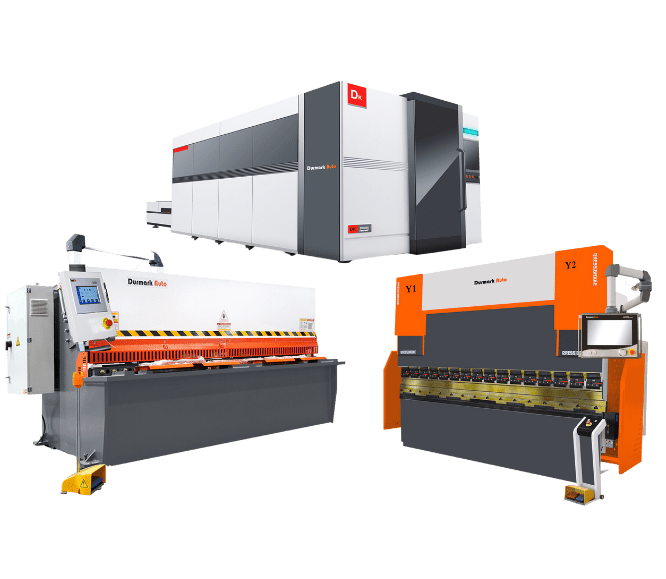
Request a Quote

Request a Quote

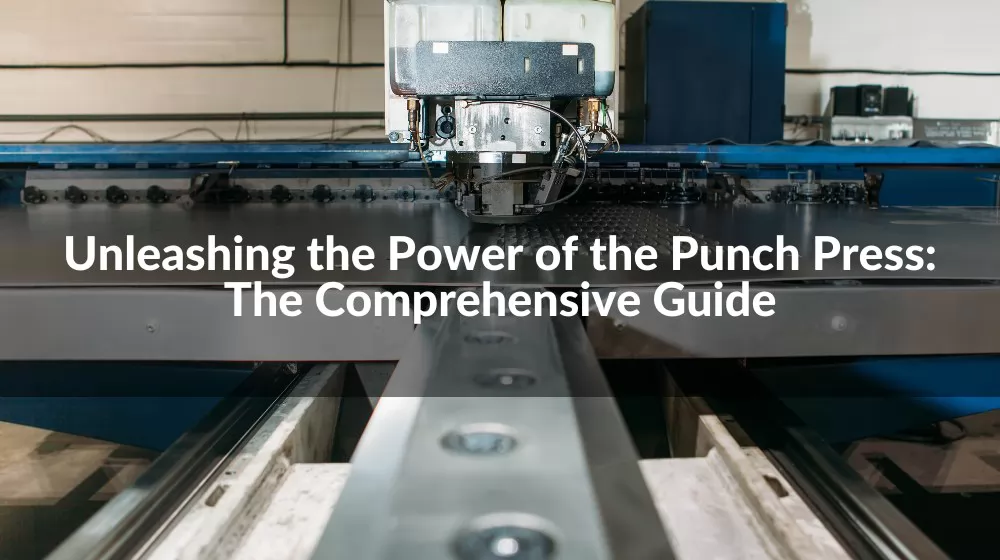
In the dynamic world of manufacturing, the punch press stands as an undeniable powerhouse. A marvel of engineering, it plays a pivotal role in numerous industries, from automobile production to electronics manufacturing. But what makes a punch press so powerful, and how do you choose the right one for your needs? This comprehensive guide will answer these questions and more, delving into the mechanics, applications, and versatility of punch presses. We'll also shed light on the importance of selecting the right punch press manufacturer to ensure you get a machine that's perfectly tailored to your requirements.
In the realm of manufacturing, precision and efficiency are paramount. One machine that consistently delivers on both fronts is the punch press. A punch press is a type of machine press that uses a tool and die surface to cut metal into various shapes. This machine plays a pivotal role in many manufacturing processes, enabling businesses to produce components with exceptional accuracy and speed.
The punch press is designed to exert a high level of force through the punch - a hardened tool steel - onto the metal sheet placed over a die. The punch and die's collaboration in the punch press ensures that the metal sheet is accurately cut, shaped, or formed according to the desired specifications.
Punch presses come in a variety of types and sizes, each catering to a specific need in the manufacturing industry. From single station units to progressive or transfer types, the diversity of punch presses is a testament to their versatility.
The punch press, particularly when manufactured by leading punch press manufacturers, is a testament to the power of modern engineering. It is a machine that combines brute force and precision, enabling industries to create products of remarkable quality and consistency.
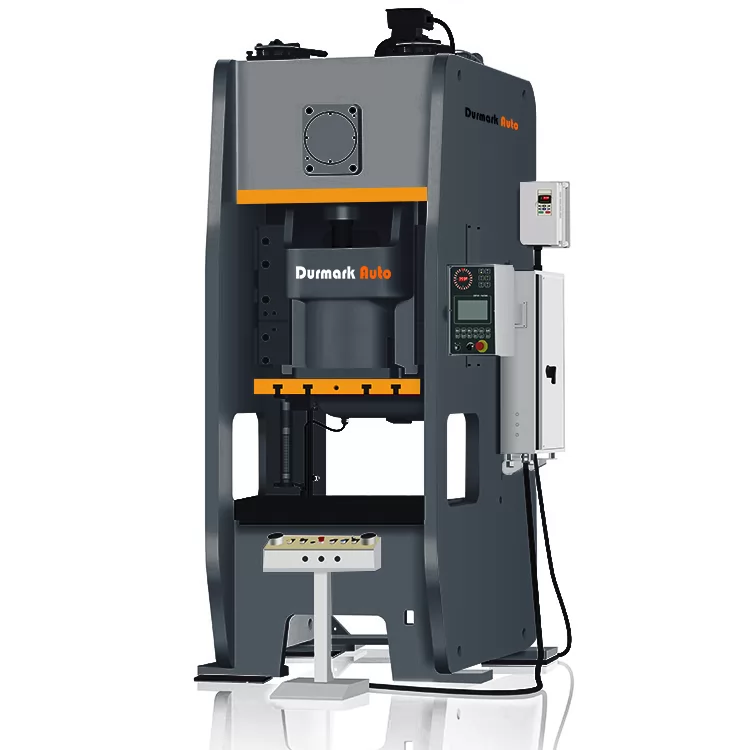
In the world of manufacturing, one size rarely fits all. This is especially true when it comes to the punch press. As diverse as the industries they serve, punch presses come in several types, each with their unique capabilities and applications.
The mechanical punch press is perhaps the most common type. It operates using an electric motor that is connected to a flywheel, which drives the ram holding the punch. Their speed and precision make them ideal for high-volume stamping jobs.
Hydraulic punch presses, as the name suggests, use hydraulic power to drive the machine's ram. These machines offer excellent control over the punch's speed and pressure, making them an excellent choice for more complex or delicate operations.
Pneumatic punch presses utilize compressed air to power the machine. These presses are known for their efficiency, speed, and simplicity. They also require less maintenance compared to other types, making them a popular choice among many manufacturers.
Servo punch presses are the newest addition to the punch press family. They use a servo motor for direct control of the ram and punch, allowing for unparalleled precision and speed. These machines are highly versatile and can be used for a wide range of applications, from simple stamping to complex forming operations.
Turret punch presses are highly sophisticated machines that can hold multiple tools in a rotating turret. This allows the machine to perform a variety of operations without needing to change tools, increasing efficiency and reducing downtime.
A punch press is more than the sum of its parts. However, understanding these individual components is crucial to fully appreciate the machine's capabilities and operations. Here, we delve into the key parts that constitute a punch press.
The frame is the skeleton of the punch press. It is typically constructed from heavy-duty steel to provide the necessary rigidity and stability during operation. The frame houses all the other components and is designed to withstand the considerable forces exerted during the punching process.
The ram is the driving force behind the punch press. It is a movable component that applies the necessary force to the punch, driving it into the die. The ram can be driven by mechanical, hydraulic, pneumatic, or servo systems, depending on the type of punch press.
The punch and die are the business end of the punch press. The punch is a hardened tool steel that is shaped according to the desired final product. The die, on the other hand, is a cavity that matches the punch's shape. When the punch is driven into the die, it cuts or forms the metal sheet placed between them.
Present in mechanical punch presses, the flywheel stores energy from the electric motor and transfers it to the ram. It ensures a smooth and consistent operation by regulating the energy flow.
The clutch engages or disengages the flywheel's power transmission to the ram in a mechanical punch press. The brake, meanwhile, stops the ram movement when necessary. These components are crucial for the safe operation of the machine.
The control panel is where operators interact with the machine. It allows for the control of various machine parameters such as speed, pressure, and stroke length, depending on the type of punch press.
In turret punch presses, the turret holds multiple tools that can be quickly and automatically switched, enhancing the machine's versatility and efficiency.
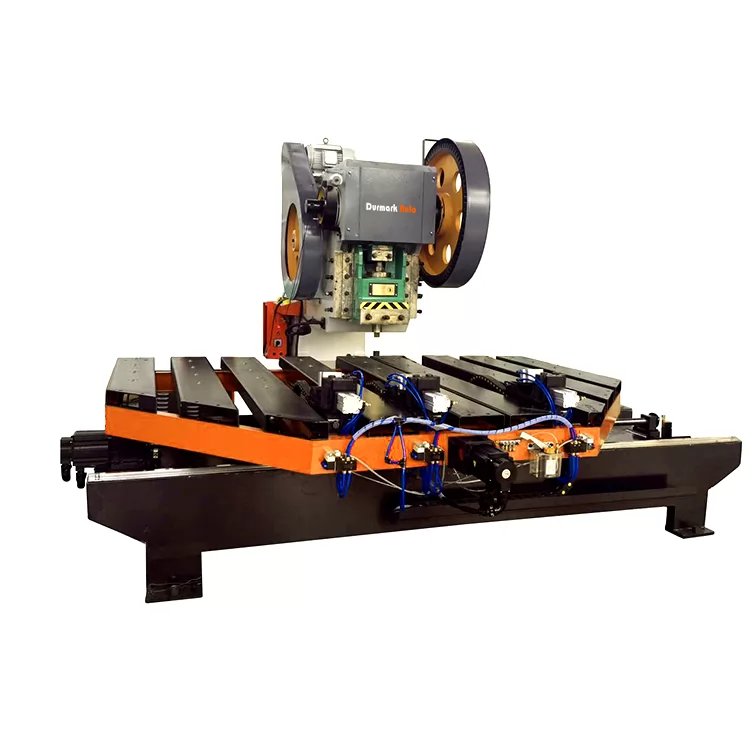
Understanding the intricacies of how a punch press works can be a fascinating journey. Let's explore this process, keeping in mind the various components we discussed in the previous chapter.
The punch press operation can be broken down into several key steps:
The first step in the operation of a punch press is the placement of the metal sheet (or other work material) onto the machine. This material is positioned over the die, ready for the punching operation.
Once the material is correctly positioned, the operator engages the machine via the control panel. The settings such as speed, pressure, and stroke length are configured based on the type of operation and material.
With everything set, the real action begins. The ram, powered by either a mechanical, hydraulic, pneumatic, or servo system, exerts force onto the punch. The punch then descends onto the metal sheet that lies over the die.
As the punch meets the material and is driven into the die, it either cuts or forms the material into the desired shape. The precision and consistency of this operation are a testament to the quality of the punch press, particularly when crafted by a top-notch punch press manufacturer.
After the punching operation, the punch is retracted, and the finished piece is ejected or removed from the machine.
The process repeats for the next piece, with the punch press capable of performing multiple operations rapidly and with high precision.
In the case of a turret punch press, the machine can switch between different tools in the turret, allowing for varied operations without needing to stop and change tools manually.
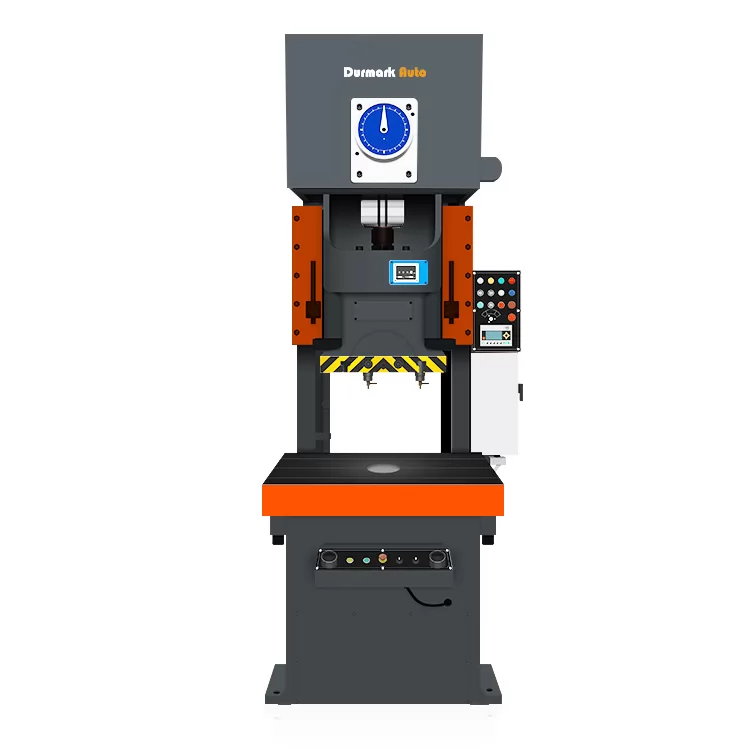
The punch press, with its remarkable versatility, has found its way into a multitude of industries. It's not just a machine; it's a solution to a wide array of manufacturing needs. Let's delve into some of the key industries that rely on punch presses.
The automobile industry is one of the primary beneficiaries of punch press technology. Punch presses are used to create a variety of parts such as panels, brackets, and other essential components. Their precision and speed allow for the high-volume production necessary in this industry, ensuring the manufacture of uniform, high-quality parts.
Sheet metal processing is another area where punch presses shine. They are used to cut, form, and shape sheet metal into a wide array of products. From HVAC components to architectural elements and beyond, the punch press's capability to work with varying thicknesses and complexities of sheet metal is a significant advantage.
In electronics manufacturing, precision is paramount. Punch presses are used to create components such as circuit board frames, casings, and many other parts. The ability of punch presses, particularly those from leading punch press manufacturers, to maintain precision and consistency in their operations is invaluable in this industry.
Furniture production also benefits greatly from punch press technology. Punch presses are used to create various components used in furniture, from chair and table frames to decorative elements. Their ability to work with different materials and produce complex shapes makes them an excellent choice for this industry.
The punch press is a multifaceted machine that can perform a variety of operations. By changing the tools and settings, manufacturers can leverage this single machine for a multitude of purposes. Let's explore some of the key operations that can be performed on a punch press.
As the name suggests, piercing and punching is the primary operation of a punch press. This process involves creating holes or cut-outs in a material. The punch, driven by the ram, enters the material and removes a section, leaving a hole in the desired shape and size.
Bending is another operation that can be carried out using a punch press. This process involves shaping the material into different angles and forms. Bending is especially common in sheet metal processing, where it is used to create corners, folds, and other shapes.
Grooving is an operation that involves making a long, narrow cut in the material, often for the purpose of bending or folding it at a later stage. Cutting, on the other hand, involves slicing the material into smaller pieces or desired shapes. Both of these operations are easily handled by a punch press.
Embossing is a unique operation that involves creating raised or recessed designs on the material. It's often used to add decorative elements or markings to a product. With the right tools, a punch press can perform embossing operations with excellent precision.
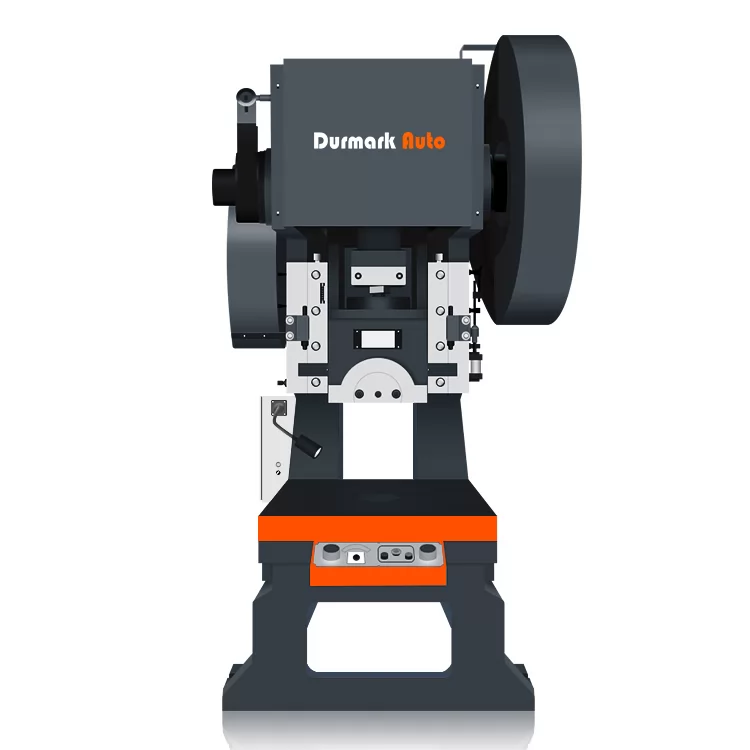
Choosing the right punch press is a decision that can significantly impact your business's efficiency and productivity. There are several factors to consider to ensure you select a machine that fits your unique needs and environment. Let's delve into these considerations.
As we discussed earlier, punch presses come in various types, including mechanical, hydraulic, pneumatic, servo, and turret punch presses. Each type has its strengths and is suited to different kinds of operations. Consider your specific requirements and select the type that best fits your needs.
The material you plan to work with plays a significant role in choosing a punch press. Different materials, such as steel, aluminum, plastic, or others, may require different types of punch presses or tools. Ensure the machine you choose can handle your intended work material effectively.
If you're dealing with high production volumes, a punch press that offers high speed and efficiency would be ideal. For lower volumes or more complex operations, you might prioritize precision and versatility over speed.
The complexity of the operations you need to perform is another important factor. For complex or varied operations, a turret punch press, which can hold multiple tools, might be the best choice. For simpler operations, a mechanical or hydraulic punch press might be sufficient.
Punch presses come in various sizes. Consider your available space when choosing a machine. You'll need to ensure there's enough space not only for the machine itself but also for safe and comfortable operation.
As with any significant investment, budget is an important consideration. Keep in mind that while a higher-end machine may be more costly upfront, it could offer greater efficiency, reliability, and longevity, potentially saving costs in the long run.
Lastly, the reputation of the punch press manufacturer is crucial. A reputable manufacturer will provide high-quality machines that offer reliability, precision, and durability. They should also offer excellent customer service, providing assistance and support as needed.
In the world of manufacturing, both the punch press and the press brake play essential roles. While they might appear similar at first glance, these machines have distinct functions and are suited to different types of operations. Let's explore the key differences between a punch press and a press brake.
The primary difference lies in their core functionalities. A punch press is used to punch or cut holes in a material, while a press brake is designed to bend or fold material, typically sheet metal.
The tooling used in these machines also differs. A punch press uses a punch and a die to create holes or shapes in the material. In contrast, a press brake uses a set of dies that can bend the material into various angles and shapes.
While both machines can offer high precision, their specific capabilities can vary based on the nature of the operation. A punch press can create highly accurate holes and shapes, while a press brake can provide precise bending angles and lengths.
In terms of flexibility, a turret punch press, which can hold multiple tools, can perform a variety of operations, making it a highly versatile machine. On the other hand, a press brake, while less versatile, offers exceptional performance in bending operations, with the ability to create complex, multi-angle bends in a single pass.
Press brakes are often better suited to work with thicker materials, while punch presses excel with thinner materials. However, this can vary based on the specific machine and tooling used.
The punch press, renowned for its versatility, can indeed handle a wide variety of materials. This capability is one of the key factors that makes it such an invaluable tool in diverse industries. Let's explore some of these materials that a punch press can work with.
Metals are the most common materials processed by punch presses. From aluminum and steel to brass and copper, the punch press can handle various metals with ease. The choice of metal often depends on the specific application, with each metal offering unique properties such as strength, malleability, and resistance to corrosion.
Certain types of plastics can also be processed using a punch press. These might include durable plastics used in manufacturing components for industries such as electronics or automotive. The punch press can create precise, consistent shapes in plastic, making it a useful tool in these applications.
Composite materials, which combine properties of different materials, can also be handled by a punch press. Composites are often used in industries such as aerospace, automotive, and marine, where they offer benefits such as high strength-to-weight ratios.
Laminates, which are made by layering different materials, can also be processed using a punch press. These are often used in applications that require durability and resistance to elements such as heat, pressure, or moisture.
In the realm of manufacturing, a punch press is an indispensable tool that can transform your operations. As we've explored, choosing the right punch press and the right punch press manufacturer can make all the difference in your productivity, efficiency, and safety.
Now that you're armed with this knowledge, it's time to take the next step. At Durmark, we are a reputable punch press manufacturer committed to delivering top-notch machines that are designed to exceed your expectations. We invite you to explore our range of punch presses at durmark-machinery.com. Experience the Durmark difference and unleash the full potential of your manufacturing capabilities with our high-quality punch presses. Your journey towards manufacturing excellence starts with Durmark.
Read More:
Top 10 Shearing Machine Manufacturer in 2022
How to Choose a Right Shearing Machine Manufacturer
.png)


